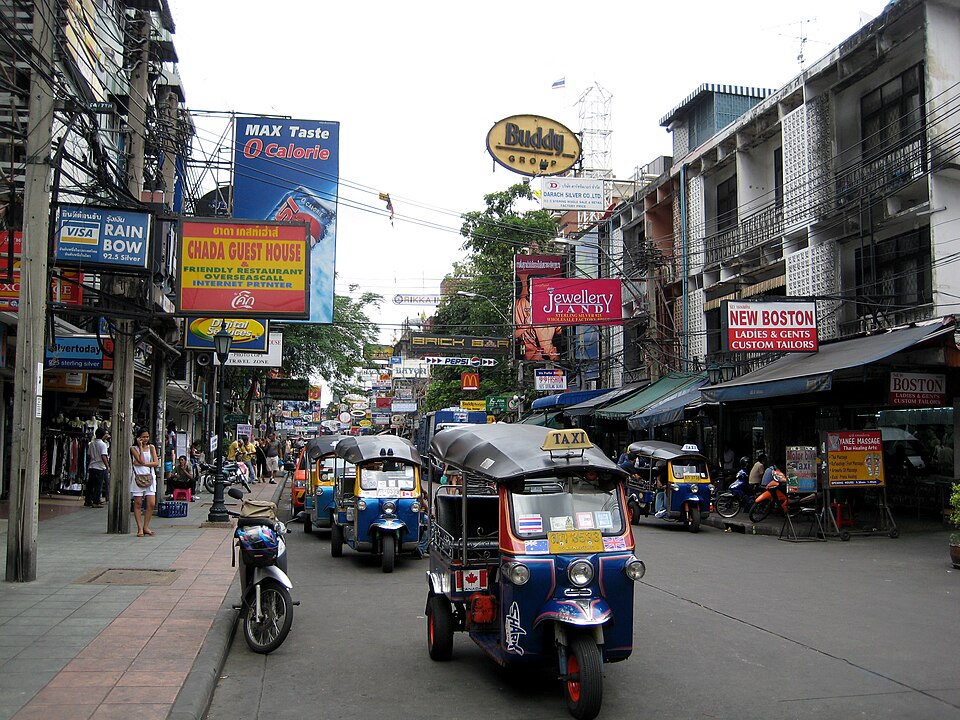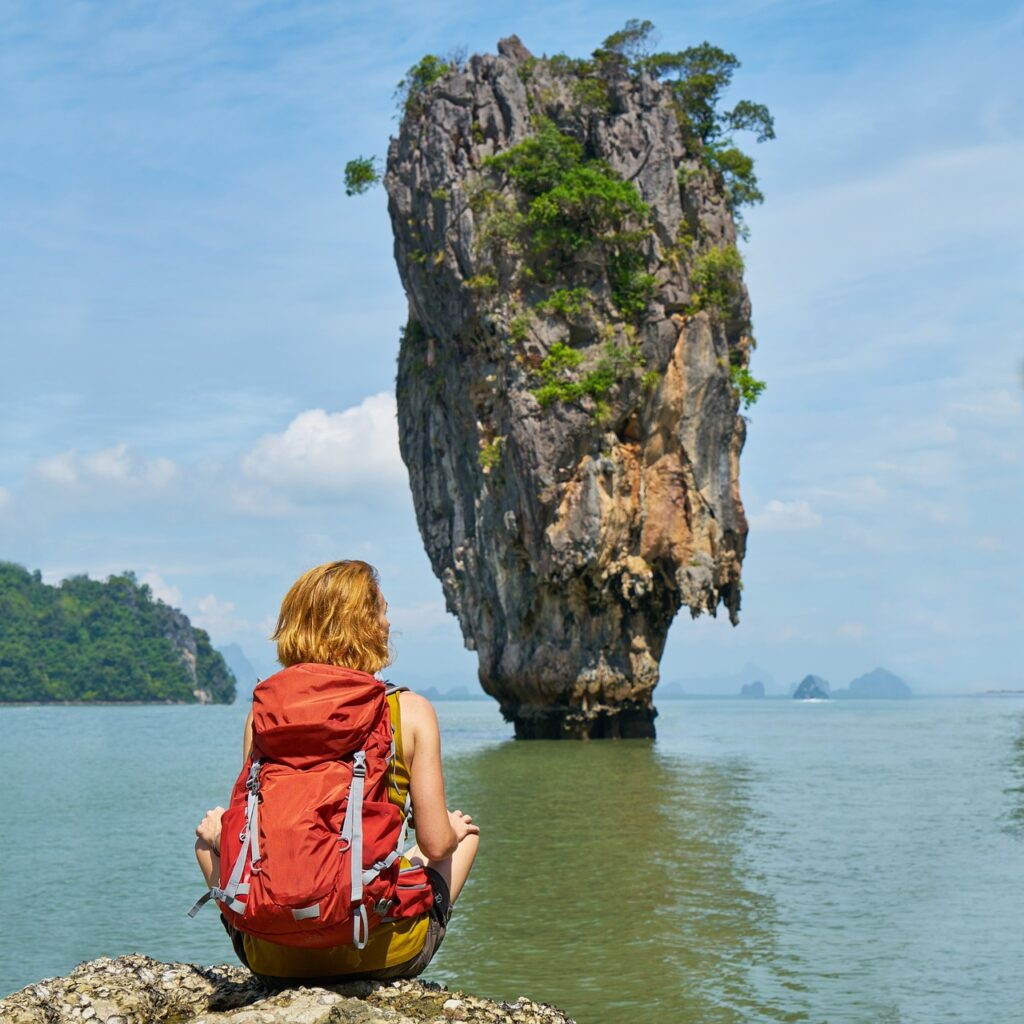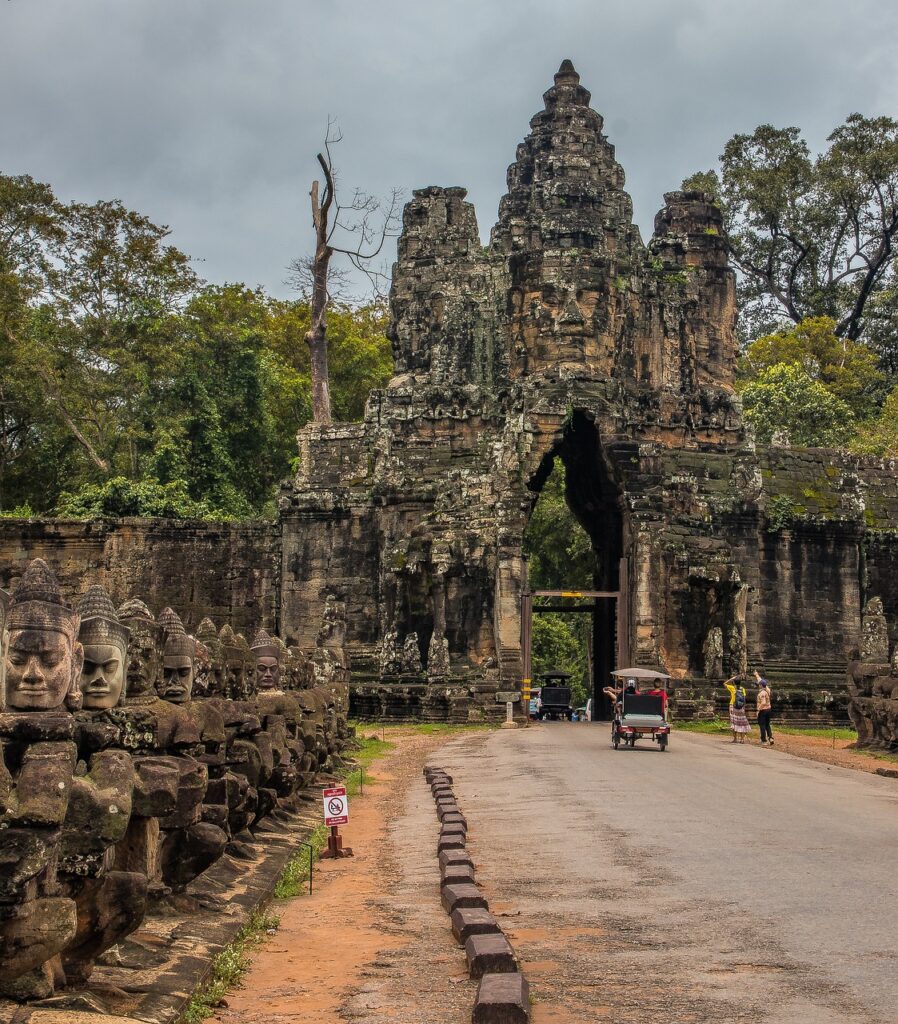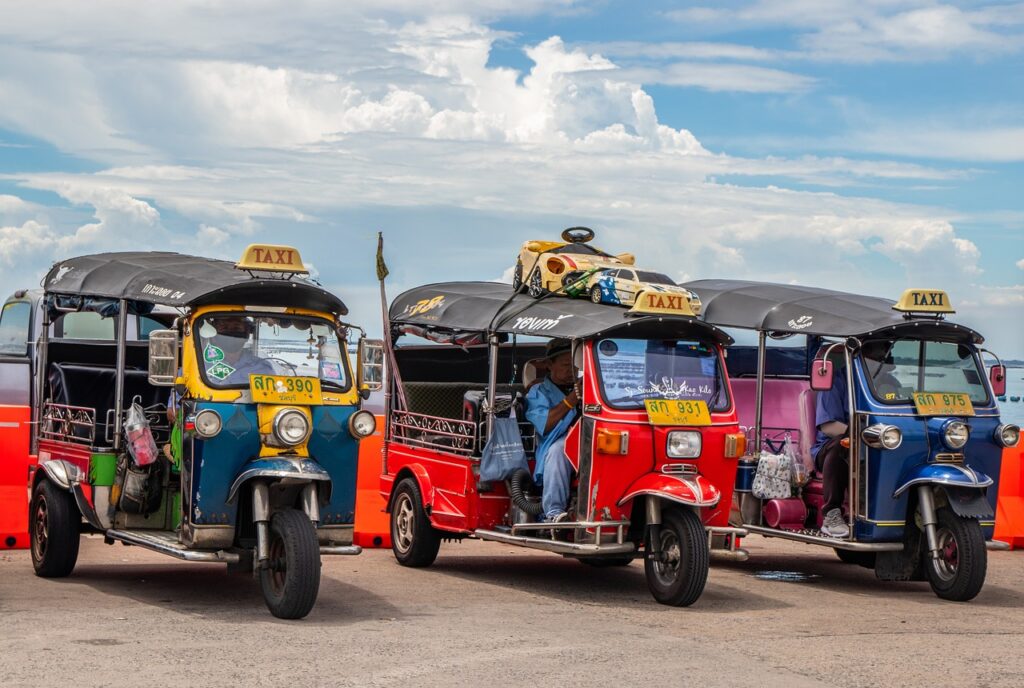
Backpacking Through Southeast Asia: Complete Budget-Friendly Guide
Are you considering a backpacking through Southeast Asia adventure on a small budget? You’re in the right place. Southeast Asia is a haven for budget-conscious travelers. In this blog post, I’ll guide you through the best routes, tips, and tricks to make your budget-friendly journey memorable and affordable. Southeast Asia offers it all without breaking the bank.
Choosing the Best Time to Visit
Picking the right time to explore Southeast Asia can significantly impact your budget and overall experience. Here’s how to make the best choice:
Understanding the Seasons – Southeast Asia experiences three main seasons: the dry season, the wet season, and the shoulder season. Each has its advantages and disadvantages for budget travelers.
The Dry Season
- Occurs during the winter months, typically November to February.
- Ideal for pleasant weather and outdoor activities.
- Peak tourist season with higher prices for accommodation and tours.
- Booking in advance is recommended.
The Wet Season
- Falls between June and October.
- Offers lower prices on accommodation and fewer crowds.
- Expect heavy rainfall and occasional flooding, particularly in coastal areas.
- Some regions, like Bali, have their charm during the wet season.
The Shoulder Season
- The transition period between the dry and wet seasons.
- Occurs in March-April and September-October.
- Offers a balance between good weather and reduced costs.
- Ideal for budget-conscious travelers looking to avoid peak prices.
Top Backpacking Routes in Southeast Asia
Now that you know when to plan your trip, let’s explore the top backpacking routes in Southeast Asia. I find that these routes offer diverse experiences, cultural encounters, and affordability.
The Banana Pancake Trail
- Countries: Thailand, Cambodia, Laos, Vietnam
- Highlights: This classic backpacking route takes you through some of Southeast Asia’s most iconic destinations.
- Thailand: Start your journey in Bangkok, a bustling metropolis known for its vibrant street life, historic temples, and mouthwatering street food. From there, explore the ancient city of Ayutthaya and the beautiful northern city of Chiang Mai.
- Cambodia: Discover the awe-inspiring Angkor Wat temples in Siem Reap and immerse yourself in Cambodian culture in Phnom Penh, the capital city.
- Laos: Experience the serene beauty of Luang Prabang, a UNESCO World Heritage site, and explore the picturesque landscapes of Vang Vieng.
- Vietnam: End your journey in Vietnam, where you can cruise through the stunning Halong Bay, explore the busy streets of Hanoi, and relax on the beautiful beaches of Da Nang and Nha Trang.
- Budget-Friendly Activities: The Banana Pancake Trail offers plenty of budget-friendly experiences, such as indulging in delicious street food, exploring historic sites, and staying in affordable hostels.

chadmoone, CC BY-SA 2.0 https://creativecommons.org/licenses/by-sa/2.0, via Wikimedia Commons
The Southern Loop
- Countries: Thailand, Malaysia, Singapore, Indonesia
- Highlights: This route takes you through diverse landscapes and cultural experiences.
- Thailand: Begin your journey in Bangkok, then head to the stunning beaches of the south, like Krabi and Phuket.
- Malaysia: Explore the modern city of Kuala Lumpur, visit the UNESCO-listed George Town in Penang, and trek through the lush Cameron Highlands.
- Singapore: Experience the futuristic city-state of Singapore, known for its architecture, vibrant neighborhoods, and diverse cuisine.
- Indonesia: Conclude your adventure in Indonesia, where you can relax on the paradise beaches of Bali, explore the cultural richness of Ubud, and dive into the underwater world of the Gili Islands.
- Budget-Friendly Activities: Enjoy local street markets, use affordable transportation options like buses and trains, and find budget guesthouses for accommodation.

The Northern Circuit
- Countries: Vietnam, Laos, Cambodia
- Highlights: This backpacking route focuses on the northern part of Southeast Asia, offering a mix of natural beauty and cultural exploration.
- Vietnam: Start in Hanoi, the capital of Vietnam, and explore the mesmerizing terraced fields of Sapa. Enjoy the stunning landscapes of Ha Long Bay and the vibrant energy of Ho Chi Minh City.
- Laos: Continue your journey to Vientiane, the capital of Laos, and experience the laid-back vibes of Vang Vieng, nestled among picturesque limestone karsts.
- Cambodia: Conclude your adventure by visiting the majestic temples of Angkor Wat in Siem Reap and soaking in the rich history and culture of Phnom Penh.
- Budget-Friendly Activities: Rent scooters for easy and affordable exploration, savor local street eats for a taste of authentic cuisine, and opt for budget-friendly guesthouses to stretch your budget.

Accommodation Options
There are plenty of accommodation options when planning a backpacking through southeast Asia trip. Here is a general overview of what options are available to you:
Hostels
- Description: Hostels are a popular choice for budget travelers. They offer dormitory-style rooms with shared facilities like bathrooms and common areas.
- Pros: Hostels are affordable, social, and often have communal spaces where you can meet other travelers.
- Cons: Privacy can be limited in dorms, but private rooms are sometimes available for a slightly higher cost.
Guesthouses
- Description: Guesthouses are small, family-run accommodations. They provide private rooms with basic amenities, and some may offer shared facilities.
- Pros: Guesthouses offer a more local and personal experience, often at a reasonable price.
- Cons: The quality of guesthouses can vary, so read reviews and ask for recommendations.
Homestays
- Description: Homestays allow you to stay with local families, immersing yourself in the culture. Accommodations can range from basic to more comfortable.
- Pros: Homestays offer a unique cultural experience and a chance to connect with locals.
- Cons: Comfort levels may vary, and amenities might be basic in some cases.
Budget Hotels
- Description: Budget hotels provide private rooms with en-suite bathrooms. They offer more comfort and privacy compared to hostels and guesthouses.
- Pros: Budget hotels strike a balance between affordability and comfort.
- Cons: Prices can be higher than hostels and guesthouses, but they are still usually budget-friendly.
Camping
- Description: In some regions, you can camp in designated areas or even wild camp. This is the most budget-friendly option, but it requires proper gear.
- Pros: Camping allows you to connect with nature and is often the cheapest accommodation option.
- Cons: Not all areas are suitable for camping, and you’ll need to carry camping gear with you.
Each option I have provided offers its unique advantages and can contribute to a memorable backpacking experience in their own way.
Food and Dining on a Budget
Exploring cultural food is a highlight of any backpacking adventure. Here are options to savor the local flavors while staying within budget:
Embrace Street Food
- Description: Southeast Asia is famous for its street food culture, with vendors lining the streets offering delicious and affordable dishes.
- Pros: Street food is not only tasty but also cheap, allowing you to sample a variety of dishes.
- Cons: Pay attention to hygiene, choose stalls with a high turnover of customers, and avoid consuming uncooked or risky foods.
Eat Where the Locals Do
- Description: Locals know the best and most affordable places to eat. Look for crowded, hole-in-the-wall eateries with a diverse clientele.
- Pros: Eating where locals do ensures an authentic experience.
- Cons: Language barriers may be a challenge, but pointing at pictures or dishes can help.
Market Meals
- Description: Local markets, especially night markets, offer a wide array of affordable street food and freshly prepared dishes.
- Pros: Markets are a hub of local cuisine and culture, and prices are often lower than at sit-down restaurants.
- Cons: Markets can get crowded, so be prepared for a busy dining atmosphere.
Budget Restaurants
- Description: Look for budget-friendly restaurants that cater to locals and backpackers. They offer set menus or a variety of affordable options.
- Pros: Budget restaurants provide a comfortable dining environment and a chance to try regional specialties.
- Cons: Prices can vary, so check menus and ask about prices before ordering.
Cook Your Own Meals
- Description: If your accommodation has a communal kitchen, take advantage of it by preparing your meals.
- Pros: Cooking your own meals is the most budget-friendly option and allows you to control your food expenses.
- Cons: It may limit your exploration of local cuisine, but it’s an excellent way to save money on the road.
Enjoying local food is not just a way to save money; it’s a cultural experience that adds depth to your backpacking journey.

Transportation Tips
Ground transportation on your backpacking through southeast Asia trip is easier than you think. Thanks to a variety of options, you can get around affordably and effectively.
Buses
- Description: Buses are a common and budget-friendly mode of transportation in Southeast Asia, connecting cities and towns.
- Pros: Buses are widely available, and they offer a cost-effective way to cover long distances.
- Cons: The quality of buses can vary, so choose reputable companies.
Trains
- Description: Trains are another popular option, especially in countries like Thailand, Malaysia, and Vietnam.
- Pros: Train travel offers scenic views and comfortable seating options, making it a pleasant way to travel.
- Cons: Train schedules can be less frequent than buses, so make sure to plan accordingly.
Tuk-Tuks and Local Transport
- Description: Tuk-tuks, motorbike taxis, and local buses are common forms of transport within cities and towns.
- Pros: These options are often the cheapest for short distances and provide a local experience.
- Cons: Negotiating fares can be a challenge, and safety standards may vary.
Scooters
- Description: Renting scooters is a popular way to explore destinations at your own pace, especially in rural areas.
- Pros: Scooters offer flexibility and access to off-the-beaten-path locations.
- Cons: Ensure you have the necessary licenses and safety gear, and be sure to drive cautiously!
Ride-Sharing Apps
- Description: In some cities, ride-sharing apps like Grab (similar to Uber) are available, providing affordable and safe transportation.
- Pros: These apps offer transparent pricing and convenient pick-ups.
- Cons: Availability may be limited in rural areas.
Boat and Ferry Travel
- Description: In coastal regions and islands, boats and ferries are essential for getting around.
- Pros: Boats provide access to stunning island destinations and scenic journeys.
- Cons: Schedules can be weather-dependent, so plan for delays.
Choose the mode that best suits your itinerary and comfort level, and always be prepared for unexpected delays or changes in plans when traveling in this diverse and exciting region.

Cultural Etiquette and Responsible Travel
Understanding and respecting local customs and cultures are vital aspects of responsible and meaningful travel in Southeast Asia. I have provided some essential guidelines to ensure you have a positive impact on the destinations you visit:
Learn About Local Customs and Traditions: Research the cultural norms, customs, and traditions of the countries you’ll be visiting. Read guidebooks, consult travel forums, or ask locals for insights into appropriate behavior.
Dress Respectfully: Dress modestly, especially in religious sites and conservative areas. Cover your shoulders and knees, and remove hats and shoes when required.
Greet Locals Respectfully: Use appropriate greetings and gestures when interacting with locals. Learn basic greetings and thank-yous in the local language to show respect.
Ask Permission Before Taking Photos: Always seek permission before photographing people, especially in rural or remote areas. Be sensitive to people’s privacy and be prepared for possible refusal.
Respect Religious Sites: When visiting temples and religious sites, follow specific rules, such as removing shoes, covering shoulders, and staying quiet. Research the guidelines for each site you plan to visit and adhere to them.
Reduce Plastic Waste: Southeast Asia struggles with plastic pollution. Carry a reusable water bottle and shopping bag to reduce single-use plastic consumption. Participate in beach clean-up activities if available in coastal areas.
Learn Basic Phrases: Learning a few words or phrases in the local language can go a long way in building connections and showing respect. Practice greetings, saying thank you, and polite requests before your trip.
Practice Responsible Wildlife Tourism: Avoid activities that exploit animals, such as riding elephants or supporting wildlife tourism that doesn’t prioritize animal welfare. Research ethical wildlife sanctuaries and organizations that protect animals.
Responsible travel not only enriches your experience but also contributes positively to the places you visit. By understanding and respecting local cultures and being environmentally conscious, you can leave a lasting, positive impression in Southeast Asia.
Backpacking through Southeast Asia on a budget is an adventure like no other. This vibrant region welcomes budget-conscious travelers with open arms, offering natural beauty, cultural diversity, and unforgettable moments. By following the information I outlined in this guide, you can embark on a budget-friendly journey that’s both memorable and culturally enriching.

Hey, backpacking through Southeast Asia is a budget-conscious traveler’s dream, where vibrant cultures, stunning landscapes, and affordable adventures converge.
From exploring ancient temples in Cambodia to indulging in mouthwatering street food in Vietnam, every day brings new, wallet-friendly discoveries. With a wealth of budget accommodations and diverse transportation options, from bustling cities to tranquil islands, this region offers an accessible and unforgettable journey for backpackers.
Responsible travel practices, such as reducing plastic waste and respecting local customs, ensure that travelers can enjoy this budget-friendly adventure while contributing positively to the communities and environments they encounter along the way.
Hi Jake,
I agree that contributing positively to the communities and environments along the journey is essential for responsible travel practices. Many consider travel plans that only benefit themselves, but we must consider how we can benefit the communities we visit.
Hope you enjoyed the content and are considering taking your own backpacking through Southeast Asia trip!
Thanks,
Andrew